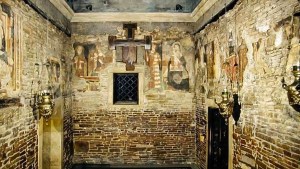Often certain biblical phrases don’t get translated very well. Take for example the common translation of Matthew 13:55. The people of Nazareth question Jesus’ divine power by asking, “Is he not the carpenter’s son?”
This is, of course, in reference to Joseph, who is traditionally known as a “carpenter.” The translation has led to countless depictions of Joseph in Christian art as a man who labors in his wood shop, making chairs and tables all day.
Greek meaning of “carpenter”
However, the word used in this passage is not always as clear-cut and specific. The original Greek passage describes Joseph as a “tekton,” which had various meanings in the ancient world. According to one scholar, “Etymologically, the Greek term tektōn can be traced back to the Indo-European root tek- or teks- meaning to cut or fashion with an axe, but it also refers to weaving, building, fabricating and joining.” Additionally, “passages from the Iliad and the Odyssey have shown that tektones work with all kinds of materials and tools.”
Highly skilled laborer
These men were highly skilled laborers who were adept at doing all kids of work. Another commentator explains how a “tekton, could be a simple carpenter, but it could also mean master craftsman, working in either wood or masonry. A tekton was the person each village depended on to set their foundations right, or to build a properly functioning door. In other words, Joseph and his son, Jesus, were the go-to guys when you wanted to build a house for a growing family.”
One way to describe Joseph is that he may have been the “handyman” of the neighborhood who helped everyone with their projects, big or small. Another word to describe him would be “craftsman.”
This interpretation sheds more light on the work of St. Joseph and his foster-son Jesus. It pictures the two going around the village and getting asked by everyone to come over and fix their house. This also may explain why everyone in Nazareth knew Jesus as the “carpenter’s son.” Joseph and Jesus would be a frequent sight throughout the town, helping everyone with their projects.
In the end, while it may be true that Joseph was a carpenter as we normally think, it is also very likely that he could have been the “handyman” who was as skilled with wood as he was with stone or any other material.

Read more:
How Our Lady’s home of Nazareth ended up in Italy

